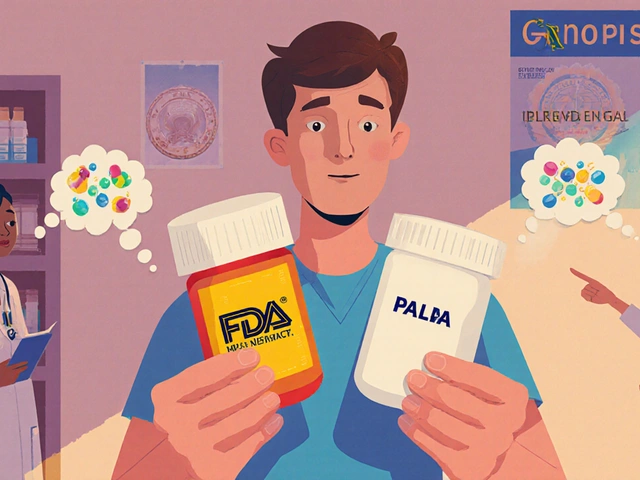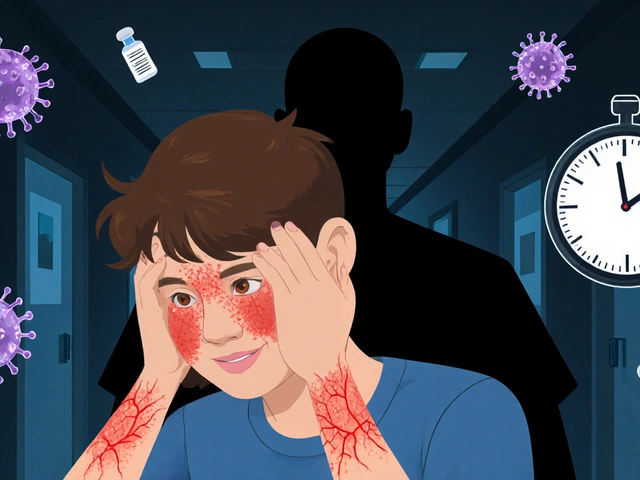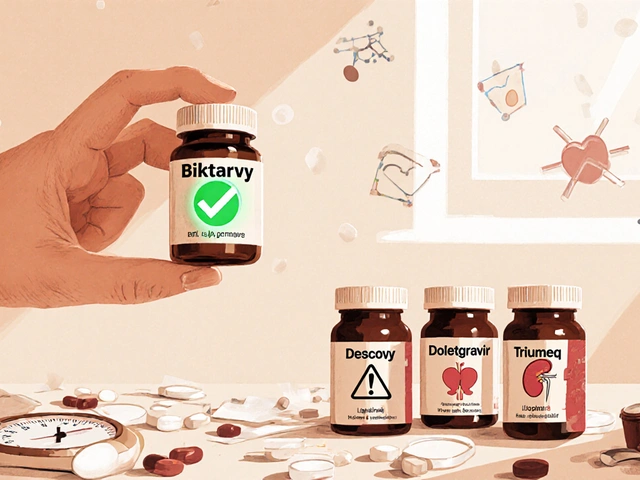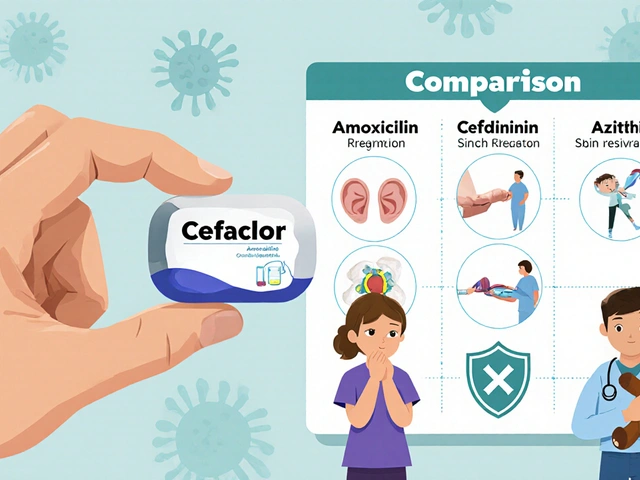Every year, as the days get shorter and the sun rises later, thousands of people in Dunedin and beyond start feeling off-not just tired, but deeply down. It’s not laziness. It’s not just the cold. For many, it’s seasonal affective disorder, or SAD, a real, measurable type of depression that shows up like clockwork each fall and winter. If you’ve ever felt like your energy vanished, your motivation disappeared, and even getting out of bed felt impossible during the darker months, you’re not alone. And there’s a proven, non-drug way to fight it: light therapy.
What Exactly Is Winter Depression?
Seasonal affective disorder isn’t just feeling a little blue when it’s gray outside. It’s a clinical condition recognized by the American Psychiatric Association. People with SAD experience symptoms like extreme fatigue, oversleeping, intense cravings for carbs, weight gain, and a strong urge to withdraw from friends and activities. These aren’t fleeting moods-they last for weeks or months, and they return every year around the same time.
In places like Dunedin, where winter days are short and skies stay overcast for days on end, SAD affects about 5% of adults. That’s roughly one in every 20 people. Women between 25 and 45 are most likely to experience it, and those who’ve tried antidepressants before are more likely to turn to light therapy. The cause? Not just weather. It’s your body’s internal clock-your circadian rhythm-being thrown off by lack of natural sunlight.
How Light Therapy Works
Light therapy isn’t just sitting near a bright lamp. It’s a precise treatment that uses artificial light to mimic the sun’s effect on your brain. The key is intensity: you need a device that delivers 10,000 lux of light. That’s about 20 times brighter than a typical indoor light. The light enters through your eyes-not by staring at it, but by having it shine indirectly onto your face while you do other things like read, drink coffee, or check your phone.
This light tricks your brain into thinking it’s morning. It tells your body to stop producing melatonin (the sleep hormone) and to start making serotonin (the mood booster). Within days, many people report feeling more alert, less sluggish, and emotionally steadier. Research from JAMA Psychiatry in 2024 showed that 41% of people with non-seasonal depression went into remission after using light therapy-similar to how well antidepressants work, but without the side effects like weight gain or sexual dysfunction.
What You Need to Use Light Therapy Correctly
Not all light boxes are created equal. If you buy one off Amazon without checking the specs, you might waste money and time. Here’s what actually works, based on clinical studies and expert guidelines:
- Intensity: Must be 10,000 lux. Lower intensities (like 2,500 lux) require longer sessions (up to 2 hours), which most people can’t stick with.
- Duration: 30 minutes per day. More than that doesn’t help much, and less won’t trigger the same biological response.
- Timing: First thing in the morning, within an hour of waking. Morning light resets your internal clock most effectively. Evening light can mess with your sleep.
- Distance: Sit 16 to 24 inches away. Don’t stare at the light. Just have it in your peripheral vision while you’re awake and active.
- UV filter: Must block 99% of ultraviolet light. Unfiltered light can damage your eyes over time.
Brands like Carex Day-Light Classic Plus and Verilux are commonly recommended because they meet these standards. Most cost between $100 and $200. Some premium models include dawn simulation-gradually brightening over 30 minutes before you wake up-which helps ease you out of sleep naturally. These cost up to $300 but can be worth it if you struggle with waking up.
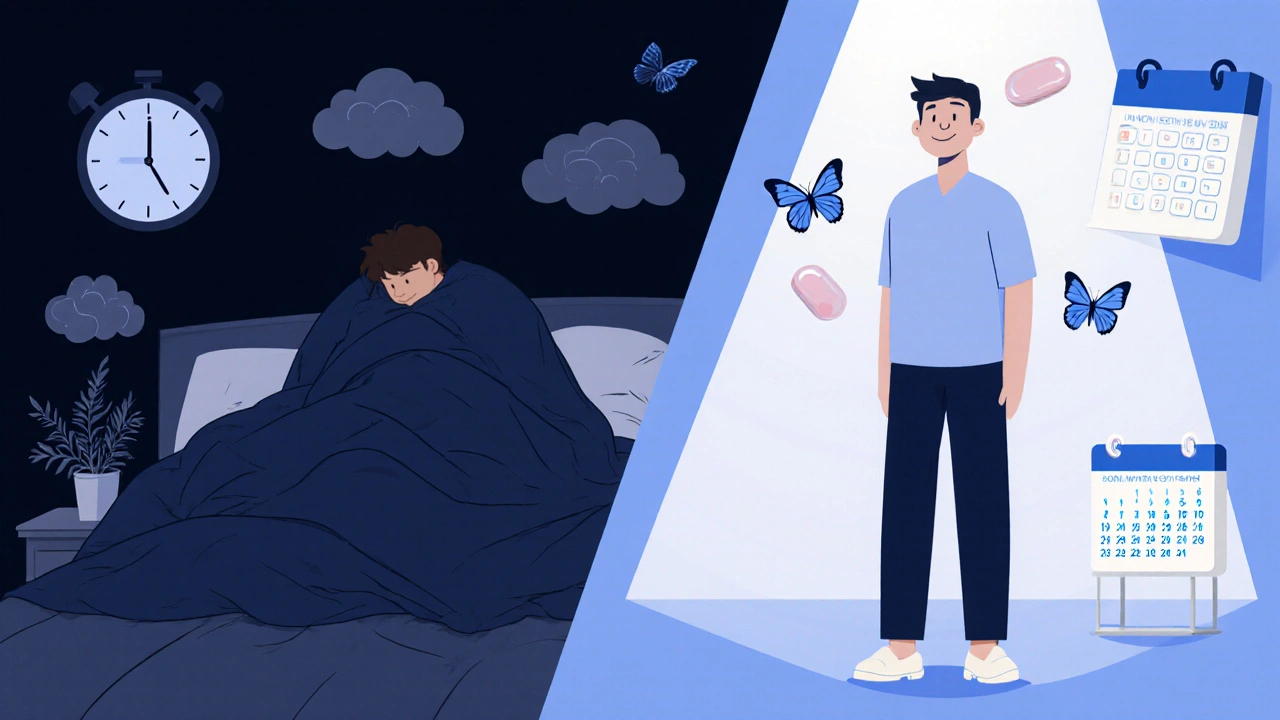
How Fast Does It Work?
Unlike antidepressants, which can take 4 to 6 weeks to show results, light therapy often works in days. Many users report feeling a difference within 3 to 5 days. One Reddit user, ‘WinterSurvivor89’, said their depression score dropped from 22 to 8 on a clinical scale after just five days of consistent use. That’s not luck-it’s biology.
But it’s not magic. You have to use it every day, even on weekends. Skip a few days, and the benefits fade. That’s why compliance is the biggest challenge. People get busy, forget, or feel too tired to sit still in the morning. That’s where dawn simulators or portable light visors (like Luminette 3) can help. They’re less bulky and let you move around while getting light exposure.
How It Compares to Other Treatments
Is light therapy better than antidepressants? For SAD, the evidence says yes-for speed and safety.
In a major 2006 study, people using light therapy improved faster than those taking fluoxetine (Prozac). By week 2, the light group was already feeling better. By week 8, both groups were similar-but light therapy had fewer side effects. No nausea. No weight gain. No emotional numbness.
Compared to talk therapy or exercise, light therapy is more reliable for people with moderate to severe SAD. Exercise helps, but it’s harder to do when you’re exhausted. Therapy takes time to build momentum. Light therapy gives you a direct biological reset.
But it’s not a cure-all. For severe depression, especially if it’s not seasonal, light therapy alone isn’t enough. Many people combine it with counseling or, in some cases, medication. It also doesn’t work for everyone. About 40% of users don’t notice much change. That’s why it’s important to give it a full 2 weeks before deciding it’s not for you.
Risks and Who Should Avoid It
Light therapy is safe for most people. Side effects are rare and mild: eye strain, headaches, or feeling jittery. These usually go away after a few days. If they don’t, lower the intensity or shorten the session.
But there are two important exceptions:
- Bipolar disorder: Light therapy can trigger manic episodes in 5-10% of people with bipolar disorder. If you’ve ever had a manic phase, talk to your doctor before starting.
- Eyes with pre-existing conditions: If you have glaucoma, diabetic retinopathy, or macular degeneration, consult an ophthalmologist. Even though the light is filtered, your eyes might be more sensitive.
It’s also not recommended for pregnant women who are taking certain medications, or for people on photosensitizing drugs like some antibiotics or acne treatments. Always check with your doctor if you’re unsure.
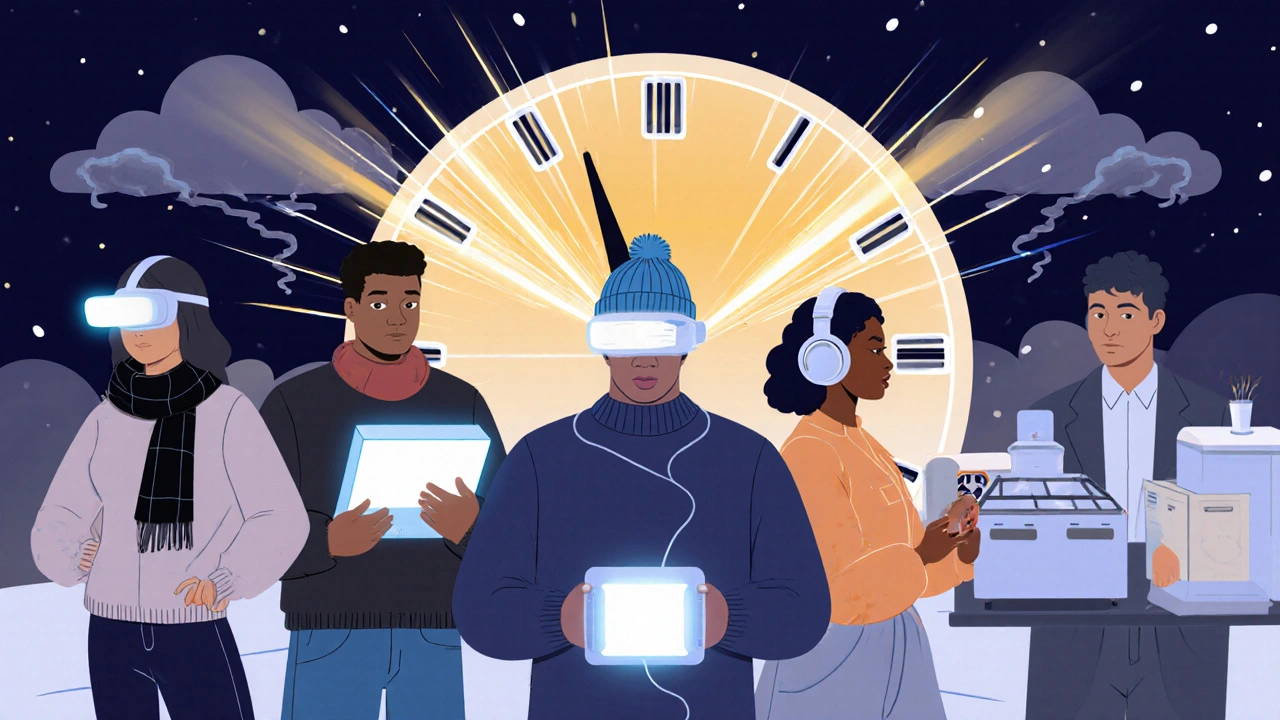
Real People, Real Results
On Amazon, the Carex Day-Light Classic Plus has over 2,800 reviews. About 68% of users say they saw significant improvement in their mood within two weeks. Common praises: “I finally feel like myself again,” “I don’t need to sleep 12 hours anymore,” and “No more midday crashes.”
But not everyone has success. About 39% of users quit because they didn’t see results or found the routine too hard. One user wrote: “Tried three different boxes. Nothing changed. Just eye strain.” That’s why consistency matters. If you’re not using it daily, you’re not giving it a fair shot.
A 2023 survey by NAMI found that 61% of people who tried light therapy kept using it long-term. Their main reason? It worked. And they didn’t have to take pills.
The Bigger Picture: Light Therapy Is Expanding
Light therapy isn’t just for winter depression anymore. In 2024, a major study showed it helped people with non-seasonal depression too. The FDA even cleared a new prescription light device for treatment-resistant depression. Researchers are now testing AI-powered systems that adjust light timing based on your body’s natural rhythms-something that could make therapy even more effective.
Meanwhile, the global market for light therapy devices is growing fast. Sales are expected to double by 2028. More insurance companies are starting to cover them-Aetna, for example, will pay up to $200 with a doctor’s note. Still, only 18% of U.S. plans cover it right now. In New Zealand, coverage is even rarer, so most people pay out of pocket.
But the trend is clear: people are looking for natural, fast-acting, drug-free ways to manage their mental health. Light therapy fits that need perfectly.
Getting Started: Your Simple Action Plan
If you think you might have SAD, here’s how to start:
- Track your symptoms for a few weeks. Do they get worse every fall? Do they improve in spring? If yes, SAD is likely.
- Buy a certified 10,000 lux light box from a reputable brand (Carex, Verilux, Northern Light). Avoid cheap ones without UV filters.
- Use it every morning, within an hour of waking, for 30 minutes. Sit 16-24 inches away. Keep your eyes open but don’t stare.
- Be consistent. Even on weekends. Even if it’s cloudy.
- Give it 2 weeks. If you feel better, keep going. If not, talk to your doctor about combining it with other treatments.
You don’t need a prescription. You don’t need to wait for spring. You just need to turn on the light-and let your body remember what sunlight feels like.

